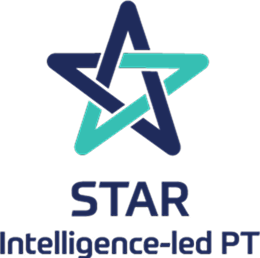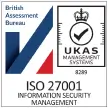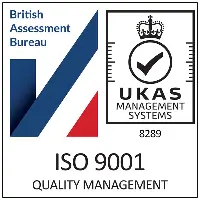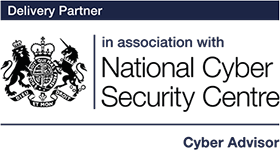Keep your organisation secure with a trusted managed SOC
Advanced 24/7 cyber protection from Bulletproof SOC as a Service.
Get a quote
Trusted cyber security services
Why choose the Bulletproof Security Operations Centre?
24/7 Protection
Defend against the constantly evolving cyber threats with 24/7 monitoring and protection.
Expert Analysts
Our managed SOC is staffed by highly qualified, experienced security professionals.
Lowest Cost
SOC as a Service is the most affordable way to access maximum cyber protection.
Built to be Bulletproof
Bulletproof’s in-house UK SOC and SIEM are engineered for power and performance.
Why SOC as a Service?
Choosing to outsource SOC services to Bulletproof provides your organisation with the knowledge and skills to directly and effectively combat cyber threats. Through a combination of state-of-the-art technology and genuine human insight, Bulletproof’s trusted managed SOC delivers credible, actionable advice to keep your data secure.
Key Features
The Bulletproof managed SOC provides 24/7 log monitoring with real-time alerting.
- 24/7 protection against cyber threats from our advanced in-house SOC
- Cutting-edge threat intelligence means we’re always ahead of the hackers
- Simple pricing structure delivers affordable premium cyber protection
- Engineered for native cloud, container, serverless & on-premises deployment
- Rapid on-boarding and deployment provides immediate cyber protection
Managed Protection
Trusted detection and response to threats using advanced, industry-leading correlation engines.
- Skilled security analysts backed by machine learning
- Powerful runbooks for effective incident response support
- Uncover unknown cyber risks with proactive threat hunting
- Management and compliance reporting
- Trusted security from industry pioneers
Enhanced Cyber Services
Bulletproof provides a host of additional innovative cyber defence services as part of our managed SIEM solution and SOC service with enhanced cyber defences, including:
- Network & host intrusion protection (IDS/IPS)
- File integrity monitoring (FIM)
- Web application firewalls (WAF)
- Data loss prevention (DLP)
- Vulnerability scanning
- Responsive system hardening
Get a quote today
If you are interested in our services, get a free, no obligation quote today by filling out the form below.
Frequently asked questions
A modern dynamic business needs to be proactive about their cyber security. A data breach can be costly, with latest estimates said to be (on average) around £3.18 million, and reputational damage can be even harder (or impossible) to recover from. Hackers can strike at any time from anywhere in the world, which means businesses have to be on guard 24/7.
This is where the Security Operations Centre comes in.
The SOC and the trained security analysts behind it are integral to maintaining good security and stopping threats before they cause damage to the business they are monitoring.
A Security Operations Centre or SOC is a central unit that oversees a company’s security through the use of people, procedures and technology. The idea is to detect and protect against cyber threats by collecting data in one central location, processing it with the latest technology and having trained security analysts conduct investigations on any alerts and anomalies raised.
Organisations of any size are open to cyber threats, and with cyber criminals using more and more sophisticated hacking software, protection has become an increasingly challenging task.
As a consequence, businesses are exploring new programmes and services to defend themselves against cyber attacks, and the integration with a security operation centre is becoming increasingly popular.
A Security Operations Centre is vital to maintaining a strong security posture. Loaded with powerful SIEM software, a SOC will help monitor and protect against cyber threats. Cyber criminals are active at all times everywhere in the world, and a fully staffed SOC will help prevent hackers from compromising your environment.
More and more compliance packages are making some form of log monitoring mandatory. It’s an essential part of the PCI DSS certification, for instance. Without a SOC gathering the right information, it will be difficult to tell if you are under attack or worse, have been breached. Dwell time, the time it takes to detect a breach, is a serious risk, and the right monitoring helps keep it to a minimum.
If you are breached, investigating the root cause will be difficult if you haven’t been gathering the right data. A SOC that has archived logs appropriately means all evidence and indicators of compromise will be preserved for digital forensic analysis.
The hardware involved will vary, but a SOC will be using a complex SIEM system to correlate and analyse logs before flagging security events to analysts for investigation.
SIEM stands for Security Information and Event Management and encompasses the technological aspect of a SOC. The capabilities that goes into a SIEM can differ depending on the product but will often include cyber defences such as:
- Intrusion detection systems (IDS)
- Intrusion protection systems (IPS)
- File integrity monitoring (FIM)
- Web application firewalls (WAF)
- Data loss prevention (DLP)
- Vulnerability scanning (VA)
A log collector will pass the log data onto the SIEM, which will correlate them into meaningful groups. There will often be some behavioural analysis involved, and activity will be compared to a set of rules unique to each environment.
Running a successful SOC is a complex process that relies on having a strong and knowledgeable team.
Cyber threats are often hidden and can originate both inside and outside your organisation, so the team running the SOC must stay up-to-date with the latest threat intelligence, proactively threat hunt, and work 24/7 for an outsourced SOC service to be valuable. Having solid runbooks and good communication channels is also vital for effective incident response.
Here are some of our Bulletproof SOC best practices:
- Making sure your SOC has full visibility of your data across the entire organisation (strong alignment between the SOC and other security intelligence tools is key) – only then can it protect it effectively
- Aligning the SOC with your company's objectives to ensure nothing stands in the way of the security measures
- Conducting an asset audit beforehand to make sure you identify and handle all the vulnerabilities
- Setting up the right team, which means the combination of people with various helpful skills, e.g., specialists for managing and alerting, for recommending the correct measures, a threat hunter, etc
- Making private all the services that you feel shouldn't be exposed
- Creating and testing an escalation procedure and incident response system to be sure that everything will go smoothly and ensure your company's safety in the case of an attack
- Starting to define rules to establish a pattern of the right behaviour and defining normal user behaviour – you won't really be protected if your employees don't know how to operate without making your company vulnerable
- Using devices wisely – you need to know which kinds of devices are best for your operations and if they are properly secured, plus, they need to be possible to integrate with your particular security system
- Ensuring 24/7 coverage – hackers can strike at any time
Log monitoring is at the heart of a SOC as a Service, and log monitoring is also a required component of many compliance standards, including PCI DSS, ISO 27001 and Cyber Essentials. This makes a managed SOC an easy way to meet thee compliance obligations. Many managed SOC services can also usually provide specific compliance reports to help with your compliance management.
A managed SOC is an external Security Operations Centre that monitors environments on behalf of other businesses. Often referred to as an outsourced SOC service, companies will pay a simple, affordable monthly retainer fee rather than build their own SOC. It is sometimes referred to as a SOC as a service SOCaaS. It takes the worries and responsibilities from the shoulders of the organisation. You, as a company, will be able to focus on your work, knowing that you are properly protected by specialists.
A SOC protects a corporate network by combining technologies and incorporating a variety of internal and external threat intelligence data. The SOC (or rather the SIEM technology used by the SOC – but more on that later) will detect threats via log analysis taken from a variety of endpoints across the business. These threats will be raised according to predefined rules which can be configured to suit any organisation.
These events can then be investigated by a trained security analyst to determine the true cause and extent of the problem.
First of all, the SOC must see everything that's going on within an organisation. That includes the use of devices, conducted processes, used applications, as well as all the defensive tools that are in place. Without full visibility, even the SOC service won't be effective.
The SOC is constantly updating, looking for vulnerabilities to get rid of, securing the firewall, checking applications, and more. You can support SOC services by educating yourself and your employees on the topic of cyber threats, threat intelligence, and your implemented security measures.
Then, the SOC keeps monitoring the network within your organisation, and it never really stops, using SIEM, MDR, or other monitoring tools. It ensures that any potential threat will be identified and analysed as soon as it arises so that it can be handled. The SOC's design aims for prioritising issues. Thanks to its thorough analysis, it can be determined which problems are more burning and what will be the right incident response in each individual case.
But that's not where the SOC activities end – it will also help you in the aftermath by restoring and recovering data that may have been lost during the incident. Additionally, the unit will investigate the attack to make sure you know what happened and what you can do to prevent it in the future. After that, your SOC can update and improve.
Increasingly, organisations are following the trend of outsourcing SOC services. There are many benefits to this model, with the costs being the biggest one. Paying a monthly fee to a reputable vendor will give you access to the latest tech, along with the skilled staff needed to monitor and investigate alerts.
The difficulty here with in-house specialists is that there is a considerable shortage of qualified cyber-security experts. There are around 2.93 million unfilled cyber security positions, and the average salary for a full-time SOC analyst (junior) is around £27,000.
With outsourcing, you can relax, knowing your business is covered by qualified experts 24/7 at a fraction of the cost of hiring in house.
The benefits of outsourced soc include:
- Significantly reduced cost
- Access to qualified and experienced staff
- A wider range of threat data
- Any upgrades will usually be applied to your service automatically
- You don't need to worry!
SIEM (Security Information and Event Management) is a technology system that powers the management of your logs. Traditionally it's been a hardware appliance, but increasingly it's delivered as a SaaS product. By contrast, the SOC (Security Operations Centre) is the team that uses the SIEM tool to keep you secure.
The SOC will use their insight and intelligence to program the SIEM tool to make sure it's spotting every kind of cyber threat. A good managed SOC also includes security researchers, threat intelligence feeds and works round-the-clock.
There are some benefits to building your own SOC, such as:
- The SOC will be dedicated to your organisation (analysts will be focussing purely on your environment), but it's possible with an outsourced service as well
- Analysts will work for you and be able to take immediate and direct action
- The software can be designed for your environment (if built yourself)
- It may be easier to make configurations directly
- You won't have to reply on third parties
However, building a SOC is time-consuming and expensive. Even if using off the shelf software and hardware, the most basic SOC will require a large budget. Plus there are staffing costs to consider. A worthwhile SOC will be staffed 24/7, so you will need to hire enough staff to cover round-the-clock shifts, whilst also taking a holiday and sick pay into account.
The difficulty here is that there is a huge shortage of qualified cyber security experts with nearly 3 million cyber security roles looking to be filled. Trained analysts with the skills to effectively investigate alerts are expensive assets. This means that in-house SOCs are typically the preserve of large multinational corporations only.








